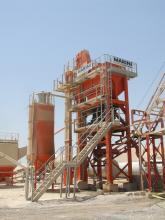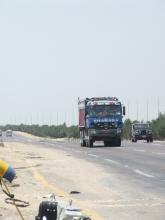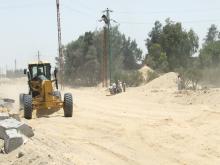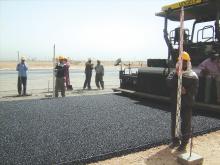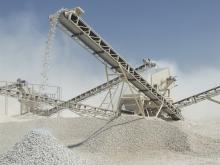Efficient earthmoving is allowing productive road construction in the Egyptian desert, Mike Woof reports. Despite ferocious desert temperatures, efficient earthmoving operations will help build new road links in Southern Egypt. Close to the Egyptian city of Assuit, the contractor Orascom is working on three key desert highway projects that will provide vital transport connections for the country's growing economy.
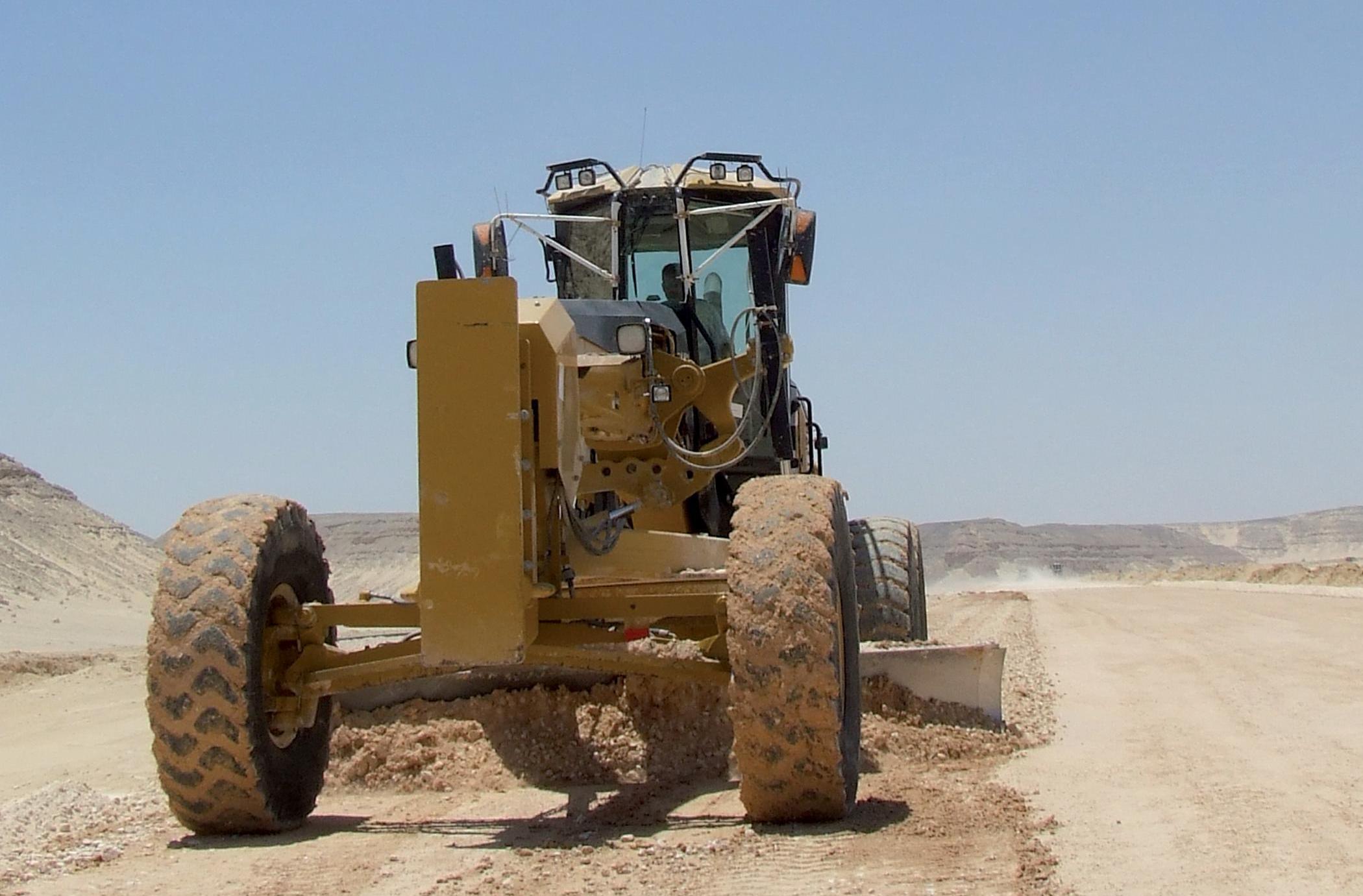
Orascom's Caterpillar 14M graders have played a key role in achieving high productivity and quality on the three highway projects close to the Egyptian city of Assuit
Efficient earthmoving is allowing productive road construction in the Egyptian desert, Mike Woof reports
Despite ferocious desert temperatures, efficient earthmoving operations will help build new road links in Southern Egypt. Close to the Egyptian city of Assuit, the contractor Orascom is working on three key desert highway projects that will provide vital transport connections for the country's growing economy. These will connect with capital Cairo to the north, the Red Sea to the east and Minya to the south, while the contractor has also recently completed its work on Suhag airport in the same area.Despite the fierce working environment where midday temperatures can hit 45ºC, Orascom is achieving high productivity as well as delivering high quality road construction. Moreover, the firm is using an innovative approach to build a crossing for one of the road sections linking Assuit to Minya, where it runs over a steep-sided valley.
For this crossing, earthmoving is being used instead of conventional bridge building, a solution that is speeding construction and cutting costs for the client by a wide margin. However, the arid desert conditions are key as only in such a low rainfall area could an earthmoving solution like this be built and expected to last. To a driver using the crossing when the road is fully opened to traffic, the link will resemble a bridge but anyone seeing the structure from a distance or stopping to look over the side of the parapet will quickly realise that this is not the case.
This novel solution has taken two years to construct and is some 350m long with a base 350m wide as well as being 80m high at its mid point. Built in steps, the fill is faced with a 500mm thick layer of rock that is grouted together to provide protection for the inner core. The 5m high steps have been built using a fleet of
The reliability of these
The fill method was selected as it was considerably cheaper than constructing a bridge and as the rainfall levels are so low in this desert environment, water flow and drainage are not an issue. In all some 2,000,500m3 of material has been used in the fill and as one of the Orascom engineering team commented, "There's no shortage of rock and dirt in the desert for this." One fill has already been constructed carrying two lanes and a hard shoulder, with Orascom now starting work on the second. Because rain is such a rare occurrence in the desert conditions, there is no need for conventional drainage around the base of the fill. However Orascom believes that the 500mm facing will protect the well-compacted inner core in the event of a storm.
The three highways form part of a major road building programme for Egypt, a country that has seen its population and traffic volumes increase rapidly in the last few decades. The Cairo - Assuit highway is a substantial project by any standards and measures 310km, with one of Orascom's site engineers for the project commenting, "It is the longest freeway in Egypt." Progress on Orascom's 20km section of the Cairo - Assuit highway has been good with the firm completing the section to the specification of its client, the Egyptian Army, on budget and well ahead of schedule. Because of this good progress the firm was then awarded a subsequent contract for an additional 20km of the highway by its client.
All three highways are being built with a similar design, with the roadways raised above ground level using fill, and structures of earth and stone having been compacted to grade to provide a stable base. These have been built up using intensive earthmoving operations, which rely on precision working. The roads feature a base with two structural layers of 150mm apiece, comprising earth and aggregate that has been graded and compacted to a very tight quality specification.
Orascom is keen to introduce AccuGrade to this project and others but has to wait for approval to employ the technology from the Egyptian Army. In all nine Caterpillar 14M graders are being used on the project, along with six Caterpillar dozers (D8s and D9s) as well as numerous soil compactors from an array of manufacturers including
The soil compactors follow behind the 14M graders as they make the finish cut, with a compaction specification of 98% being achieved in seven passes. Compaction meters on the machines allow the firm to monitor progress and ensure that the specifications are achieved.
For much of the way the routes are relatively flat so the roads are raised to a height of around 800mm, although the embankments are higher at various low points. The sides of the embankments are angled with 3:2 slopes that are faced to a depth of 400mm with rock and grouted in with cement to provide long term durability. Where the roadways cross wadis (small dry channels formed by water during the rare periods of rainfall), the end of the grouted rock facings are set in 1.5m deep by 1.5m wide gravel filters to prevent any subsidence. For most of the distance however the facing features a footing that is 2m wide by 500mm thick and which lies around 500mm below the ground surface.
Another challenge Orascom is facing however is the removal of 450,000m3 of rock from a section that is some 350m long by 17m high to make way for a section of highway, although this work will carried out by a specialist subcontractor.
The Cairo - Assuit highway is being built as a toll route and, like the other highways Orascom is working on close to Assuit, is designed with three lanes in either direction. An axle load of 13tonnes has been set for the Cairo - Assuit road, which will feature weigh stations at the toll entrances to measure trucks and prevent overloading. Truck drivers will be able to use the highway when their vehicles have axle loads of up to 18tonnes although they will pay considerably more, with charges made on a sliding scale proportional to the weight. Heavier trucks will not be allowed to use the road and this will help ensure safety by tackling overloading, as well as maximising life of the structure.
To maximise safety, no u-turns are allowed on the Cairo - Assuit roadway and to change direction a driver will have to use one of the interchanges placed at periodic intervals along the route and which feature tunnels underneath the roadway.
The twin roadways are some 14.5m wide with a median divider of 20m, featuring slipformed New Jersey barriers that are 800mm high on the outside. A smaller barrier is placed in the centre of the median to stop vehicles from making unauthorised turns and as the route runs through desert for much of its length, land costs have not been an issue so the medians are wide enough to ensure that cross-over incidents will not be a risk. Orascom is not a specialist in slipforming so this work will be carried out by the Egyptian Army, using a machine from its own extensive construction equipment fleet.
The Vögele Super 1800-2 pavers have laid asphalt mixes specially designed for the desert conditions, where deformation and rutting are the major issues for long term roadway performance. A compaction specification of 98% is required for the asphalt surface using the asphalt rollers, while the road surface features a 50mm wearing course on top of a 60mm binder course and a 70mm base course.
Orascom is using two

